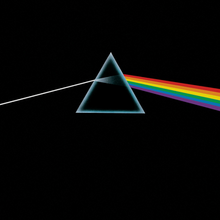- Joined
- Dec 1, 2011
- Messages
- 18,577
- Reaction score
- 57
This is one of the trickiest simple questions I've seen in TBR.
Soap bubbles change colors when observed over time. This is MOST likely due to:
A. Refraction
B. Evaporation
C. Dispersion
D. Selective Absorption
Go! Answer Here: B
Explanation to come. Explanation is in white for now, since not too many people have had a chance to try it without seeing the answer/explanation.
Constructive interference is based on a path difference traveled by the two waves (the wave that reflects off the front of the soap film and the save that reflects off of the back of the soap film). As the soap film evaporates over time, the thickness of the soap film changes (perhaps getting thicker or thinner). This change in soap film thickness in turn changes the path difference for the two waves, so as the soap film evaporates, different colors will be the ones that are adding constructively. Here's where it gets interesting Choices A and C are incorrect, because choice C is saying essentially the same thing as choice A, a refractive effect -- it occurs when the index of refraction for a material varies with the wavelength of light. When two answer choices are fundamentally the same from a physical point of view, those two choices are usually both wrong, and thus should be eliminated. Choice D is incorrect, because the wavelengths of light that are selectively absorbed by a material depend upon the molecular makeup of the material. Since this makeup does not change much with time, the colors absorbed should not change much with time.
Soap bubbles change colors when observed over time. This is MOST likely due to:
A. Refraction
B. Evaporation
C. Dispersion
D. Selective Absorption
Go! Answer Here: B
Explanation to come. Explanation is in white for now, since not too many people have had a chance to try it without seeing the answer/explanation.
Constructive interference is based on a path difference traveled by the two waves (the wave that reflects off the front of the soap film and the save that reflects off of the back of the soap film). As the soap film evaporates over time, the thickness of the soap film changes (perhaps getting thicker or thinner). This change in soap film thickness in turn changes the path difference for the two waves, so as the soap film evaporates, different colors will be the ones that are adding constructively. Here's where it gets interesting Choices A and C are incorrect, because choice C is saying essentially the same thing as choice A, a refractive effect -- it occurs when the index of refraction for a material varies with the wavelength of light. When two answer choices are fundamentally the same from a physical point of view, those two choices are usually both wrong, and thus should be eliminated. Choice D is incorrect, because the wavelengths of light that are selectively absorbed by a material depend upon the molecular makeup of the material. Since this makeup does not change much with time, the colors absorbed should not change much with time.
Last edited:

